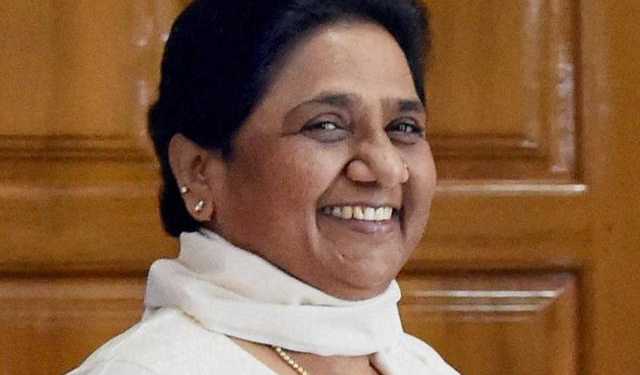First the facts. Mayawati stood up to introduce a motion during the zero hour. As such, the time allotted to any member during the zero hour is 3 minutes. But Mayawati chose to ramble on, presumably to score quick political points. The crux of her speech was the familiar charge of failure of the Union government in stopping atrocities against Dalits and minorities. Interrupting her monologue, Rajya Sabha Deputy Chairperson, P J Kurien asked her to restrict herself to the 3 minutes limit. That is when all hell broke loose. Opposition members, as they are wont to do, trooped into the well. Mayawati dramatically announced that the treasury members were not allowing her to speak and that she would resign straight away. By the evening, Mayawati submitted her resignation from the Rajya Sabha. Incidentally, Mayawati’s term was due to expire in April’18 and given the structure of UP Assembly, it was highly improbable that she would be re-elected, unless propped up by SP and Congress.
Time has not been on Mayawati’s side since 2014. While she was widely touted to be the Kingmaker during the Lok Sabha elections given her clout amongst the Dalit voters, Modi wave completely derailed Mayawati and her brand of politics. Bahujan Samaj Party, for the first time in recent times ended up losing everywhere. Many political analysts attributed Mayawati’s loss as a one time factor, noting that her Dalit vote bank was likely to stick to Mayawati in the future. During the 2017 UP elections, BSP was once again touted as the Kingmaker. Exit polls suggested that BSP would win between 60-70 seats. When the votes were finally counted, it emerged that BSP had won a grand total of 19 seats in the 403 member UP assembly. Far from being the Kingmaker, BSP had been relegated to a poor third place behind BJP’s 312 and SP’s 47 seats. Mayawati, who had once harboured dreams to be India’s Prime Minister had been declared unfit to be Uttar Pradesh‘s Chief Minister by the electorate.
Mayawati’s Dalit votebank has been slipping away from her slowly but steadily. In 2007, her party had swept to power with 30% vote share, by 2017 that number had dropped to a little over 19%. Even in the constituencies dominated by SCs, BJP won 84% of the seats and 41% of the total SC vote in 2017. During the 90s, when caste based politics was the flavour of the season, parties such as BSP, SP, RJD etc. had thrived. Their leaders created solid social alliances based on historical grievances, demanding a rightful share in the nation’s destiny. By the end of that decade, it was already apparent that caste politics was nothing more than a case of misplaced ideals. While the so called lower castes remained poor, mired in poverty and still faced social challenges, their leaders made millions through corrupt deeds.
Mayawati epitomized the kleptocratic nature of regimes based on so called Social Engineering.
Mayawati is mired in several cases of disproportionate assets, the infamous Taj Corridor case, her penchant to drain public money on statutes and massive parks and her legendary birthday parties, where she has frequently appeared donning diamonds and other expensive jewels.
Much like other communities, Mayawati’s vote bank also demanded development, employment and a life free from poverty. In Modi, they saw promise of development that could improve their lot and thus slowly but steadily, Mayawati’s vote bank deserted her. BJP’s massive win in UP elections is a testimony to how politics in the state had changed, even though Mayawati and others continued to harp on caste based issues. The BJP built a winnable combination of non-Yadav OBC Votes, and non-Jatav Dalit vote, allying it with its existing Upper caste support base to sweep the elections. In the meanwhile, Dalit youth wholeheartedly supported BJP and Modi’s vision of development. As if the debacle at the hustings was not enough, Mayawati realized the extent of ground that she had lost when she visited Saharanpur after the riots that shook the town recently.
The Dalit leadership on the ground had been completely taken over by a new outfit called Bhim Sena under its lawyer turned leader, Chandrashekhar Azad ‘Ravan’. In a well-attended rally held at Jantar Mantar, where Chandrashekhar appeared, in spite of UP police searching for him, it was clear that nobody was missing Maywati. Even though Kanshiram was invoked as was Babasaheb Ambedkar, Mayawati’s name did not even appear once. Dalit youth, tired of social oppression had firmly turned away from Mayawati’s BSP and embraced the more militant Bhim Sena. Many claimed that it was the Bhim Sena that had come to rescue them when BSP was completely missing from action. Tellingly, Mayawati chose to visit Saharanpur weeks after the violence had first begun. In her speech, she appealed to Dalits to stand by her party, hinting perhaps that she realized that the electorate was deserting her.
Mayawati’s Resignation Might Look Like a Hasty Decision. But When You Look a Little Closer, It’s quite well planned. Her dramatic decision to quit Rajya Sabha was to reinvigorate the party and the cadres which have been on a downward slide. Already there are reports that she will stand for Lok Sabha elections from Phulpur, once the Dy CM Keshav Maurya resigns from his Lok Sabha seat. It is also rumoured that she will be the Opposition’s joint candidate, an attempt to test a Bihar style Mahagathbandhan before the 2019 polls.


































